Example: Kelvin Functions
1. Plot the zeroth order functions ber and bei:

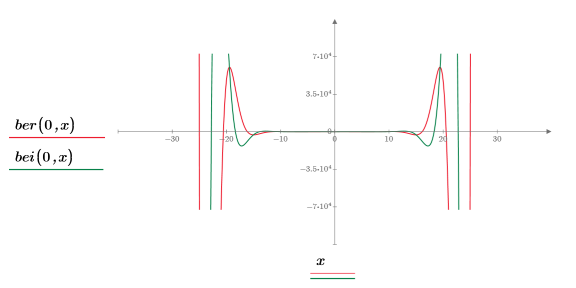
The two functions appear symmetrical.
2. Reset the tick mark values to zoom in the x-axis in order to show how the two peaks of the ber and bei functions change as the order is increased:

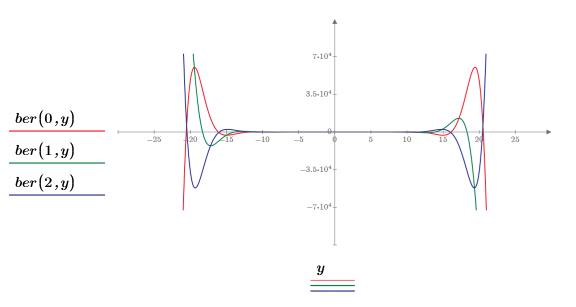
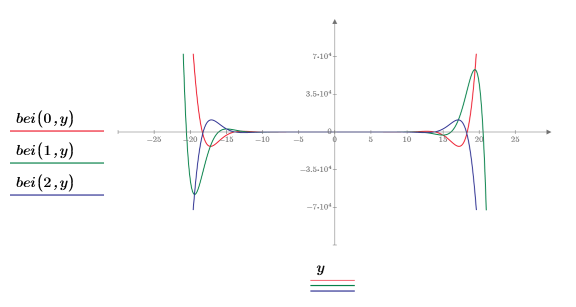
3. Use symbolic evaluation to show the relationships between the ber and bei functions with function Jn, and then create plots to show the results visually.


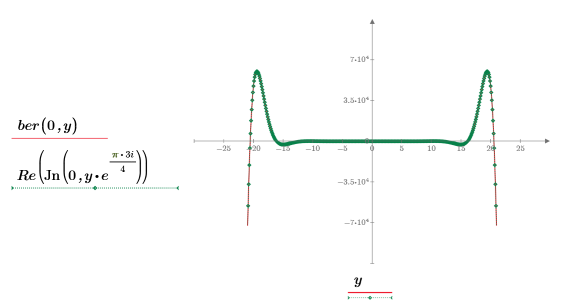
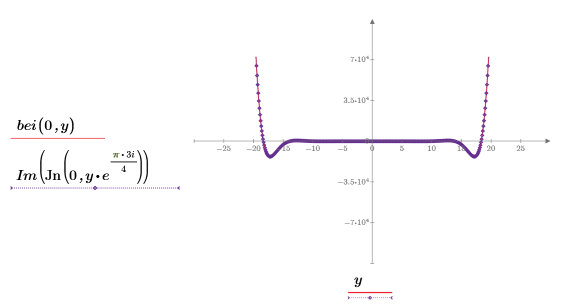
This example focuses on the ber function, but the same observations apply to function bei.
4. Define vector Z1 using function ber:





5. Find the local minimas of function ber:
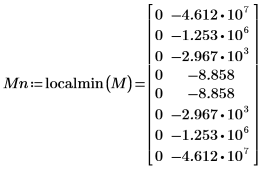
The ber function has 8 minimas when m=0. The function is symmetric. Higher order functions have different number of minimas with different locations and amplitudes.
6. Find the local maximas of function ber:

The ber function has 7 peaks when m=0. The function is symmetric. Higher order functions have different number of maximas with different locations and amplitudes.
7. Find the vertical coordinates of the four right-hand side minimas.




8. Use function match to find the index of each matching minima then find the equivalent horizontal coordinates.










9. Find the vertical coordinates of the four right-hand side maximas.




10. Use function match to find the index of each matching maxima then find the equivalent horizontal coordinates.








The range of maxima and minima amplitudes varies greatly and makes it hard to see all of them on one plot. |
11. Use markers to show the first minima (D0) and first maxima (P0):





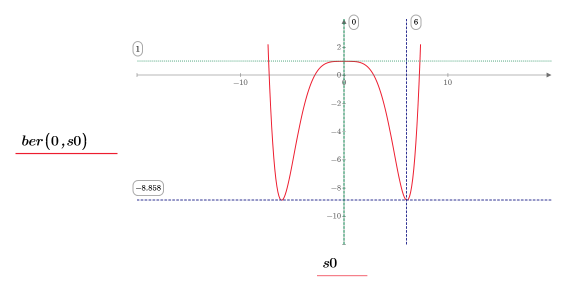
As expected, the graph shows a second minima to the left of the y-axis.
12. Use markers to show the next minima (D1) and next maxima (P1):





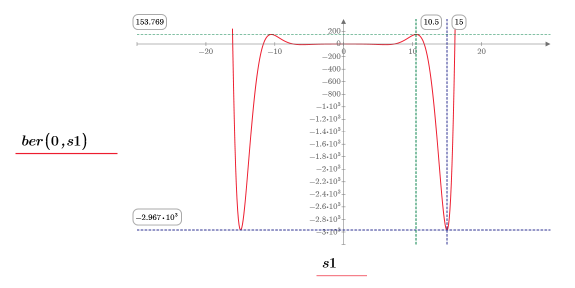
As expected, the graph shows a second minima and a second maxima to the left of the y-axis.
13. Use markers to show the next minima (D2) and next maxima (P2):





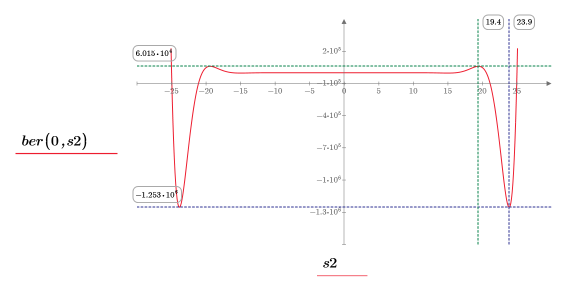
As expected, the graph shows a second minima and a second maxima to the left of the y-axis.
14. Use markers to show the next minima (D3) and next maxima (P3):





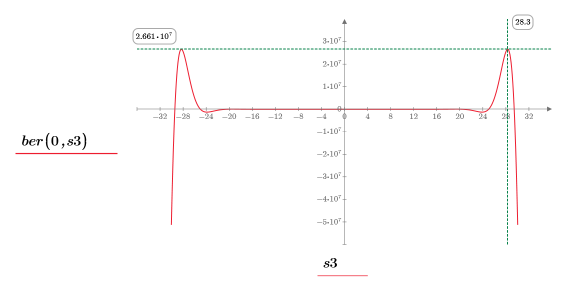
As expected, the graph shows a second maxima to the left of the y-axis.
Minima (D3), and its left-side equivalent, fall exactly on the edges of the range, so it is better to ignore them. |